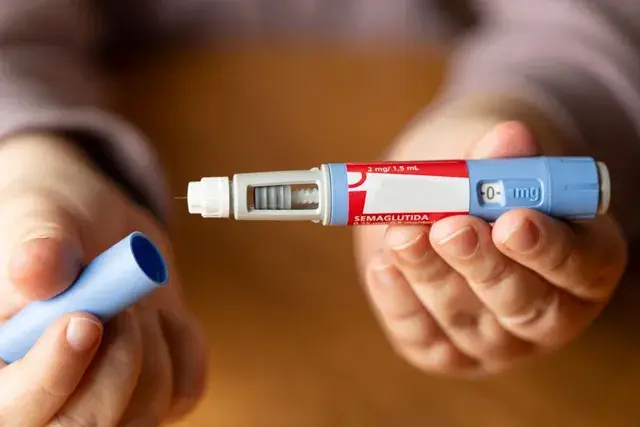Unlock Weight Loss Insights with Continuous Glucose Monitors: Personalized Insights and Real-Time Motivation in Albuquerque New Mexico
- fitmedicalweight2
- Apr 15, 2025
- 4 min read

In the pursuit of weight loss, most people focus on the scale, calories, and exercise routines. But there’s another powerful tool that’s transforming how we understand our bodies and our habits: Continuous Glucose Monitors (CGMs). Originally developed for people with diabetes, CGMs are now gaining popularity among health-conscious individuals looking to optimize weight loss and overall wellness.
So what exactly is a CGM, and how can it help with weight loss? Let’s break it down.
What Is a Continuous Glucose Monitor?
A CGM is a small wearable device that tracks your glucose (blood sugar) levels in real time, 24/7. It typically consists of a tiny sensor inserted just under your skin—usually on the arm or abdomen—and a transmitter that sends data to your smartphone.
Instead of relying on periodic finger-prick tests, CGMs offer a continuous stream of data, showing how your glucose responds to different foods, stress levels, sleep, and physical activity.
Why Glucose Matters for Weight Loss
Glucose is your body’s primary energy source. When you eat, especially carbs or sugary foods, your blood sugar levels rise. In response, your body releases insulin, a hormone that helps transport glucose into cells for energy or storage.
But here's the catch: frequent spikes in blood sugar and insulin can hinder fat loss. When insulin is high, your body is in "storage mode" rather than "burn mode." Over time, this can lead to insulin resistance, cravings, energy crashes, and weight gain.
That’s where CGMs shine—they let you see these spikes in real time, so you can make smarter food and lifestyle choices that keep your blood sugar stable and your metabolism on track.
Personalized Insights: What CGMs Reveal
Every body is different. One person might spike from a banana, while another stays stable. A CGM helps uncover these personal responses so you can tailor your diet for maximum fat loss and energy.
Here are some key insights you can gain:
1. How Specific Foods Affect You
Learn which meals cause glucose spikes
Discover surprising triggers—sometimes it’s not just sugar, but refined carbs or even “healthy” foods
Adjust portion sizes and ingredients for better blood sugar balance
2. Meal Timing
Find out how late-night eating or long fasting periods affect your glucose
Use data to optimize eating windows if you’re doing intermittent fasting
3. Exercise Impact
See how different types of workouts—cardio, strength, walking after meals—stabilize or spike glucose
Adjust workout timing based on your body's response
4. Sleep and Stress Effects
Poor sleep or high stress can raise glucose levels, even without food
CGMs help connect these lifestyle factors to your weight loss journey.
Real-Time Motivation: The Psychological Edge
Weight loss is as much mental as it is physical. One of the biggest reasons people fall off track is lack of immediate feedback. You eat something, feel fine, and don’t see consequences until days later on the scale.
But with a CGM, feedback is instant.
Here's how that helps:
Accountability: Seeing a spike after a sugary snack can discourage mindless eating
Positive Reinforcement: Watching your glucose stay steady after a healthy meal feels rewarding and motivating
Gamification: Many apps that pair with CGMs offer scores, graphs, and challenges—turning healthy habits into a fun experience.
CGMs vs. Traditional Diet Tracking
Calorie counting can feel tedious and doesn't always reflect how your body actually processes food. CGMs offer a more holistic view:
Traditional Diet Tracking | Continuous Glucose Monitoring |
Counts calories and macros | Measures real-time physiological impact |
One-size-fits-all | Highly personalized |
Often reactive | Proactive and preventive |
No insight into hormones | Shows insulin and glucose patterns |
Together, they can be a powerful combo—but if you’ve struggled with food tracking in the past, a CGM might offer the clarity and simplicity you’ve been missing.
Who Should Consider a CGM for Weight Loss?
You don’t need to be diabetic to benefit from a CGM. In fact, many wellness-focused people use CGMs to:
Break through weight loss plateaus
Understand cravings and emotional eating
Improve energy levels throughout the day
Optimize athletic performance
Reduce inflammation and metabolic risk
That said, if you have prediabetes, PCOS, insulin resistance, or a family history of diabetes, a CGM could be especially valuable.
Some devices require a prescription, but there are now several non-prescription CGM programs available through wellness platforms and health tech companies.
Tips for Using a CGM Effectively
Don’t panic over one spike – The goal is to identify trends, not stress over every number.
Log meals and habits – Apps like Levels, Nutrisense, or January AI let you log food and annotate readings.
Aim for flat and gentle curves – A moderate rise followed by a slow return to baseline is ideal.
Walk after meals – Even a 10-minute walk can flatten a glucose spike.
Stay hydrated and prioritize sleep – Both have a big impact on glucose control.
Final Thoughts
Continuous glucose monitors are no longer just for medical use—they’re unlocking a new frontier in personalized health and weight loss. By giving you real-time data on how your body reacts to food, movement, and stress, CGMs empower you to make smarter decisions, build healthier habits, and stay motivated along the way.
Instead of guessing what works, you’ll finally have the insight and feedback to lose weight with precision—and keep it off.
If you’re curious about trying a CGM, talk to a health professional or explore reputable wellness programs offering CGM access and coaching. Your healthiest self is just a data point away.







Comments